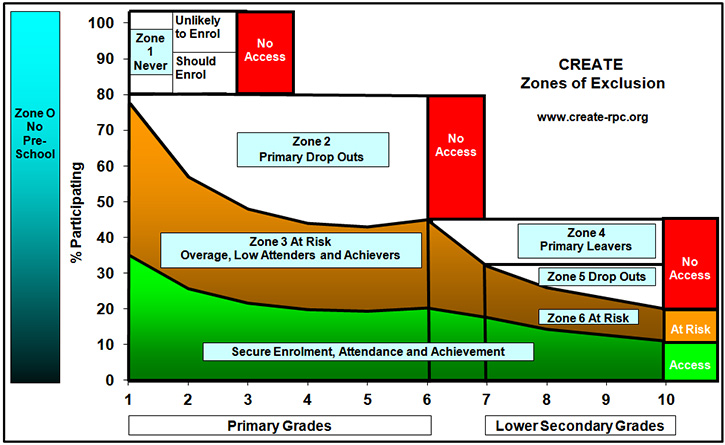Zones of exclusion
CREATE has developed a model of zones of exclusion from education which it has used to shape its research in communities and schools and as a tool for policy dialogue (Lewin 2007a). In each of the zones the patterns and causes of exclusion from education are likely to be different. They may also be different from community to community. The model charts participation by grade and identifies different groups of children of school age that fail to sustain access to basic education.
Model of Zones of Exclusion

Zone 1 contains those who never attend school. It includes those who could attend existing schools but do not, and those who are excluded by livelihoods, location, civil status, disability, social stigma or other vulnerabilities.
Zone 2 includes the majority of children who are excluded after initial entry, who drop out of school and fail to complete a full cycle. In an increasing number of countries these are the largest numbers of out of school children.
Zone 3 includes those in school but at risk of drop out, most obviously as a result of low achievement and poor attendance. These children can be described as “silently excluded” since they are enrolled but may learn little, attend irregularly, and/ or are over age.
Zone 4 contains those who fail to transit to secondary education as a result of failing to be selected, being unable to afford costs, or located far from a secondary school, or otherwise excluded.
Zone 5 includes those dropping out of secondary grades
Zone 6 contains those at risk of drop out from secondary school
Zone 0 captures those excluded from pre-school.